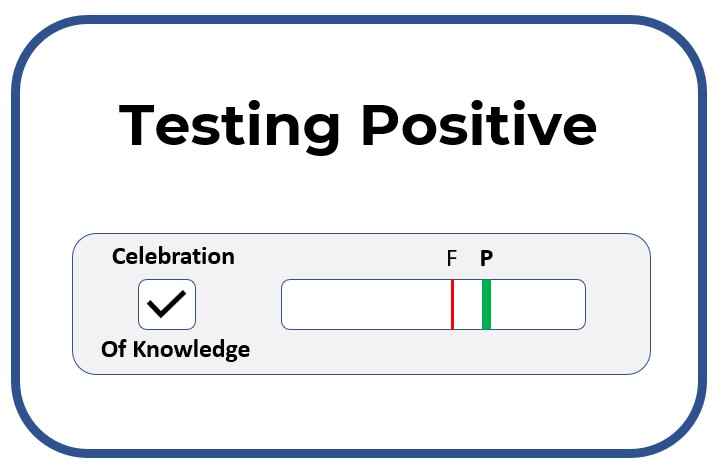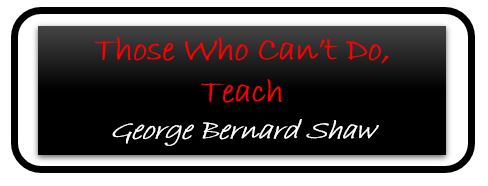Exams, tests, assessments – whatever format they come in will, no doubt, make you anxious. I lovingly refer to them as ‘Celebrations of Knowledge’ but whatever coating you put on it – it’s still a test!
Formal examinations are a part of life and whatever path you take in your career you will invariably have to be qualified, certified and eventually experienced to make it good.
Regardless of your opinion on certification over experience the World is not going to change – so you might as well get on the bus to success by bagging a certification along the way.
Check out:
https://www.cyberphil.co.uk/?p=300
How you approach a test and conduct yourself before and during the experience is all part of the process and I firmly believe that exam technique counts for a reasonable percentage of success – alongside knowing the required amount of answers of course!
And like a lot of things we do in life – it starts with a pee. Preparation.
Here are my top tips for taking a test
Know what you are letting yourself in for. Understand the length of the test, type of questions to expect and the format/layout of the testing platform. Most testing providers have online help and guidance and if you are conducting the test remotely, they may have a sample experience you can use when setting up your equipment.
Be confident with your study. It stands to reason that if you go into an exam half-cocked you will invariably be under pressure to pass. Knowing that you have gaps in your knowledge – deepens the gaps. So give yourself ample study time (without cramming) and use various techniques:
Use good training material. Go to an approved provider, use a trusted platform, read book reviews, access vendor material (if relevant) but do your homework before you invest your time and money.
- Test banks (not brain dumps) are okay as long as you use them wisely and to your advantage. They should highlight gaps in your knowledge which you can fill with studying the relevant areas after the practice test.
- Flashcards – not suitable in all areas but great for those pointers which are a pain in the arse to remember and facts that you normally have to learn parrot fashion. Little and often is the key to this and stick a list of port numbers on the fridge. (even if port numbers aren’t part of your course 😊)
- Talk to yourself. Talk yourself through a scenario or explain a concept out loud (with or without an audience). Hear yourself impart knowledge.
- Practice with practical! If you need hands on training use labs, virtualization or any means to make sure you can do stuff that you are supposed to be doing. Make it fun and go off-piste to see what happens if….? Sometimes prescribed labs end up being simple click next exercises and generally don’t enforce understanding – so be adventurous.
Use proper resources to fill in gaps – vendor supplied training material – courseware and notes aligned to the subject you are taking. Don’t Google stuff randomly. Watch videos from trusted sources of training. If you are using a training provider – USE your training provider! Instructors love questions – especially those that they don’t know the answer to!
Use various types of learning to enforce understanding – read, write, draw pictures do labs/practical exercises but don’t just rely on one method. Mix it up.
Set a date and time for your test when it is good for you. Make sure that you don’t have much on before or after the test and that you give yourself plenty of time to get to the test centre or set up your space at home. If the exam is at the end of a training course – get it in your mind that you will do the exam then! Don’t defer it or put it off – you will regret this. Immerse yourself in the training and set the exam as your goal to measure your achievement.
Plan your route to and from the training centre (if applicable) and make sure that you give yourself enough time to do both. If your exam finish time only gives you 10 minutes to get to your bus or train then adjust the time so that you don’t have to worry about it. The exam time you set is the time you take the exam. Don’t expect to turn up early and be allowed to go and take it when you want.
If you require extra time for your exam for whatever reason – make sure that this is all administered and sanctioned well before you go for you exam.
It is perfectly normal to be anxious before sitting a test. In fact I would suggest it is abnormal not to be. There are several things you can do to calm the nerves:
- Go for a walk and get some fresh air before you take the test
- Watch your favourite TV show or something not related to your exam subject
- Have a cup of tea or drink of water but don’t go mad! You may not be able to leave the test room if you need to go to the toilet.
- Go to the toilet! Preparation does start with a pee.
- Make sure you are comfortable in your surroundings. Set up your home space as you want it (keeping to the rules) or make sure you are 100% familiar with the test centre facilities.
- Use the lead-in time effectively. When you begin a test in any format – you will receive instructions on the format, times, pass mark and guidance on moving between questions etc. Read this within the allotted time and don’t simply skip through it as you are keen to get going. Even if you know the content of the instructions – it gives you a couple of minutes to get comfy and adjust to the test room environment.
Use your assets well. In a lot of tests you are allowed a blank piece of paper/whiteboard or an online version. There are a couple of ways that this can be useful.
- Use it to ‘dump’ any lists or key facts before you get to them in the test. Make sure you do this once the test has started and not before!
- Once you know how many questions there are in the exam and what the pass mark is – make a quick grid or columns for the questions. For example: If your test has 50 questions in it and the pass mark is 70% you know that you have to answer approximately 35 questions correctly to pass (this is not an exact science however as it depends on the marking of the test questions).
- Create a simple list on your paper numbering 1-50 (the number of questions in the test)
- Start the test and for every question you are confident you know the answer – put a tick against that number on your list.
- For every answer you don’t know or have doubts over put a question mark against the number and mark that answer ‘For Review’ on your testing platform. You may also put a note on your paper about the subject of the question you are not sure of.
- Complete the first round of questions. Sometimes you may get to a question which helps you to answer an earlier question you were unsure of – so using your list you can easily go back and check your answer or get the correct answer.
- Once you have completed the first round of questions – take a look at your list and count the ticks against the numbers. If you have over 35 (in my example) – there is a very good chance that you have already passed the exam so the good news is that you can only improve your score. This is not a hard and fast rule but should give you some indication of how you are doing at this point. But whatever the calculation – do not panic or let your head drop.
- If you still have some work to do to get up to the magic pass mark (comfortably) you can now look at the remaining time and relax into the questions you marked for review and allocate plenty of time to go back and work out the answers.
- Never leave a question blank or unanswered and if you are still not sure – don’t change your original answer.
- The key here is only review the questions you were unsure of and marked for review. If you go back and review the whole question set again you run the risk of running out of time and/or changing correct answers for wrong answers – which will negate the potential pass calculation you made previously. We have all probably done this at some point – but now is the time to stop!
- Once you have completed your review and you are happy that you can do no more – add up your ticks and confidently press end test.
- Leave the test room calmly and quietly and sign out under the local test centre procedures.
- Punch the air with joy, kiss the test administrator and enjoy your new qualification. (kissing test administrators is optional and please ask permission first)
Failing a test can be a huge disappointment. It happens to everybody and is a natural part of life. But if this happens and after the initial shock/disappointment – take stock. You will normally get a breakdown of areas which you need to concentrate on – but generally you may also know areas that you will need to concentrate on. Don’t rush back to the books. Take a couple of days to do something different and clear your head and then look again at the areas you need to focus on – but don’t give up on it. The reason why you failed the test is because it was a tough test and a difficult subject to master. That’s what makes passing the test and being able to meet the challenge all the more worthwhile doing. Sitting an easy test in a subject that your hamster could pass – is a hollow victory and probably a waste of time in the big scheme of things.
Passing a test is not the end of your study and experience adventure. Being able to answer questions (either multiple guess or simulated) is a country mile away from putting it into practice when it is required – so celebrate but don’t rest on your laurels. Take stock and apply your new found knowledge to your work and let it make an impact in what you do. Have trust and faith in your training and benefit from your investment. Don’t rush into your next training adventure but once you are comfortable with your new found skills – look at ways to hone and improve them.
Invest into a realistic personal development plan that works for both you and your business. That’s the key to success. Training and certification must have a positive impact on both.
Pee long and prosper!







